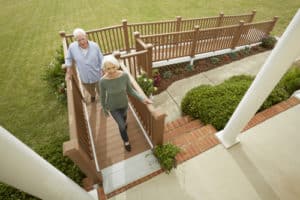
Whether you are upgrading your home for retirement or for caregiving circumstances, upgrading your space with more accessible features provides numerous benefits. It equips you with a disability-friendly property, making it easier to navigate your space and minimizing health and safety risks. Here are three tips for making your home more accessible.
Invest in Remote Devices
Seniors and those with disabilities possess varying abilities. Some find certain tasks more challenging than others and vice versa, depending on the job at hand. Investing in remote-controlled devices and SMART technology equips your space with additional helping hands.
One example of a beneficial remote-controlled device is a mini split system. There are numerous parts that go into how a mini split with remote controls works, but essentially, they provide you with the ability to control your AC device remotely. Remote control technology gives you portable access and control to the unit’s system, eliminating the need to constantly get up and travel to the device. On top of supplying you with easier access to your tech, remote-controlled systems offer more advanced properties that further help you around the space. They allow you to set timers and self-operating mechanics, minimizing the amount of work one needs to do around the house.
Add Ramps and Handrails
When choosing an ideal assisted living community, many people look for places with ramps and handrails. Similarly, these features are beneficial for other living spaces. Adding ramps and handrails around your home makes it easier for those with disabilities to navigate your space safely.
Ramps allow wheelchair users to access multiple levels and provide a less intensive physical route than stairs for those with sensitive joints. Handrails provide balance and fall support around stairways, bathrooms, and other obstacle-ridden spaces.
Make Extra Space
Making extra space offers numerous benefits. Cluttered and tight spaces make it hard for wheelchairs and walkers to get around. They also create numerous tripping hazards and increase the danger of falling. Compared to slipping in a wide open space, falling in a crowded room heightens your chances of hitting your head (and other body parts) onto sharp corners and hard objects. When you fall in an empty space, it is less likely for a collision to occur, and you will likely suffer less extreme injuries.
Opening up your space also means widening access points, from doorways to shower entrances. Walkers and wheelchairs take up room and require additional leeway. Enlarging entryways allows walkers and wheelchairs to navigate the space easily, minimizing the dangers of getting stuck or snagging on corners. Larger doorways also decrease other health and safety risks, such as accidental head collisions against the frames and tripping hazards as one tries to squeeze through a tight gap.
Implementing these tips for making your home more accessible transforms your space into an optimized place for senior and assisted living or caregiving. Accessible homes enhance living situations for those with special needs and requirements, making them safer and easier to navigate. A space that welcomes and attends to all is more enjoyable and comforting to enjoy.